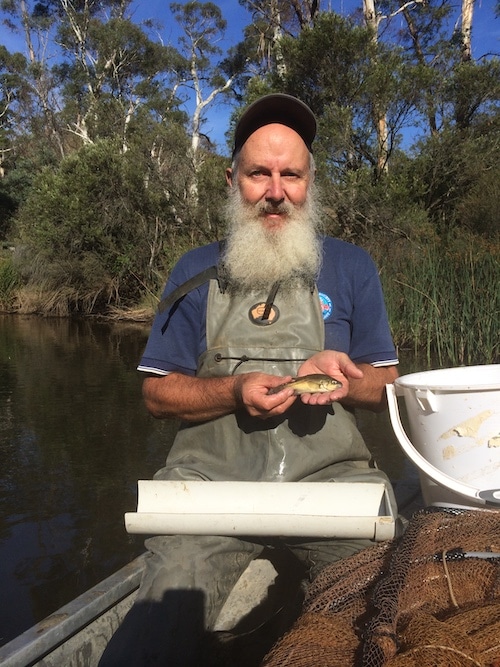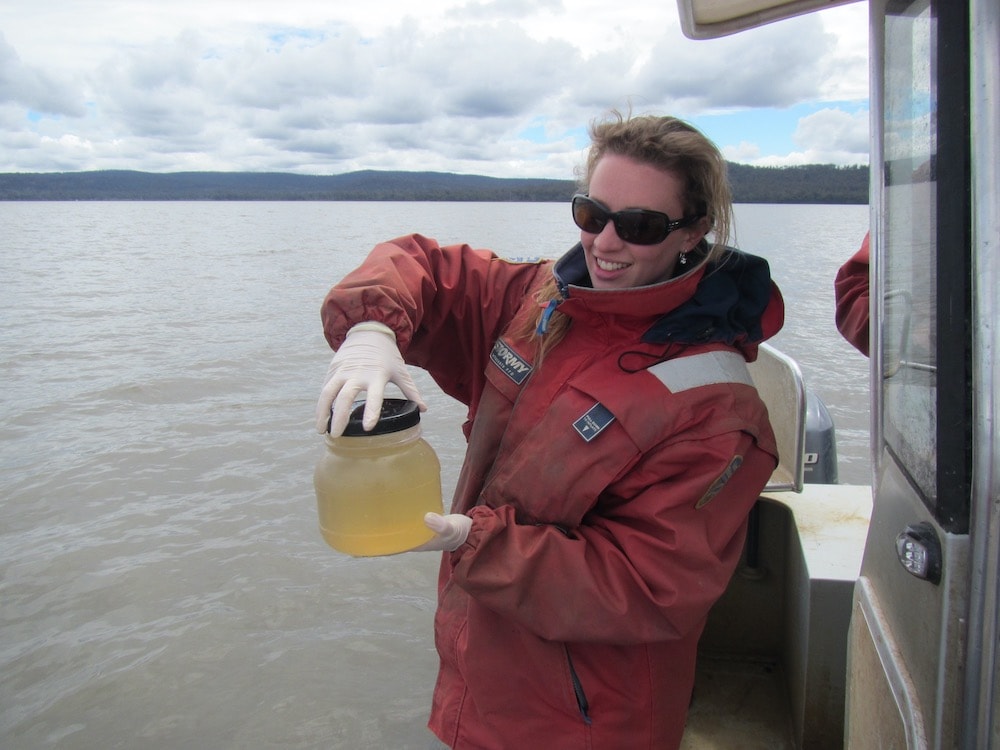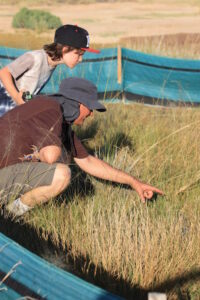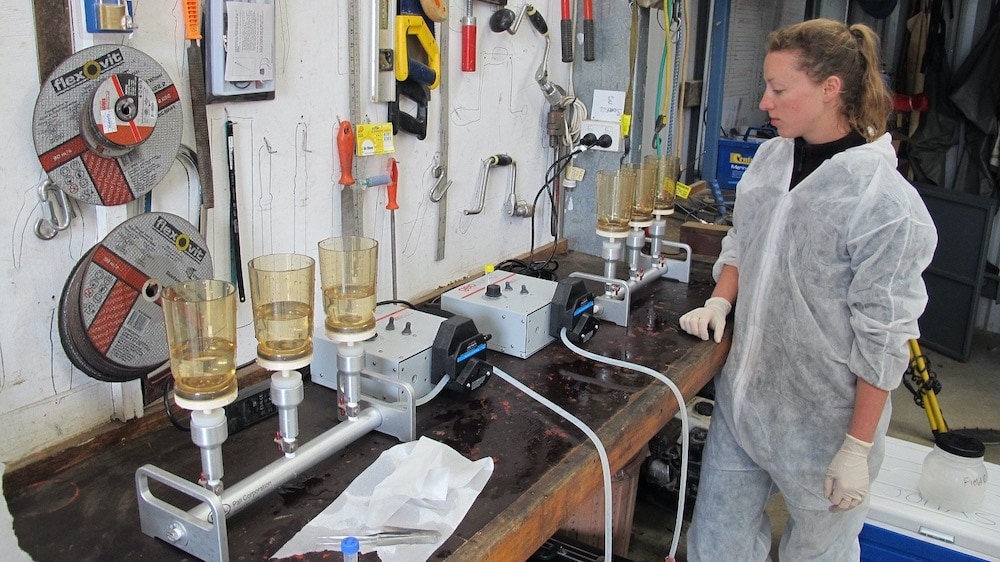The Institute for Applied Ecology (IAE), now in its fifteenth year at the University of Canberra, undertakes world class landscape research to improve our understanding of the environment and enhance decision-making for natural resource management and sustainable development. It operates within two specialised centres: the Centre for Conservation Ecology and Genetics, and the Centre for Applied Water Science.
IAE Co-Directors Professor Janine Deakin and Professor Ross Thompson both joined the University of Canberra in 2013.
Janine’s specific research interests are Tasmanian devil facial tumour disease, chromosomal speciation in rock-wallabies and sex determination in the central bearded dragon. Janine is the Director of the Centre for Conservation Ecology and Genetics.
Ross is a freshwater ecologist and has an active research program on aquatic biodiversity and ecosystem function in urban and rural landscapes. Ross is Director of the Centre for Applied Water Science.
“The exciting thing about the Institute is the focus on finding solutions to real-world problems. Everything we do has an application in mind, drawing on our strengths across everything from genomics to geology.”
Ross Thompson, University of Canberra IAE
Native fish in trouble
In 2019 a study led by IAE Associate Professor Mark Lintermans involved more than 50 national fish experts from across the country in assessing almost 250 Australian freshwater fish species. They found that 88 were threatened with extinction, with another 16 assessed as near-threatened.
“This was the first strategic national assessment ever done for Australian freshwater fish and is a wake-up call.”
“Of note is the fact that 27 of the 88 threatened fishes are currently undescribed or described since 2010, highlighting that we have likely lost several species before they were even described.”
Mark Lintermans, University of Canberra IAE

Conservation Translocation – how to provide the best chance of success
As efforts to help wildlife ramp up after the devastating bushfire season, University of Canberra researchers warn that removing species under pressure from immediate threat must be done in a measured, species-dependent way.
A study led by University of Canberra researcher Dr Elise Furlan and published in the Journal of Applied Ecology in March, recommends a long-term approach to conservation translocations, to ensure that short-term gains don’t result in long-term loss of biodiversity.
“Conservation translocation is the deliberate movement of individuals from one site to another, which can guard species from immediate threat, and is a valuable and increasingly popular tool for wildlife management.”
“Care must be taken though, to ensure translocations actually do provide the best opportunity for the survival of the species into the future. Potential benefits should be weighed against risks.”
Elise Furlan, University of Canberra IAE
The researchers based the study on translocated populations of the redfin blue eye fish (Scaturiginichthys vermeilipinnis).
Australia’s smallest freshwater fish and one of its most endangered, the redfin blue eye is found only at Bush Heritage Australia’s Edgbaston Reserve, in central western Queensland.
The study found that while the species’ genetic diversity was retained across populations, translocated populations showed reduced genetic diversity compared to source populations.
“We need to maintain highest possible levels of genetic diversity in species, because this enables them to be more resistant to future environmental change such as disease or altered environmental conditions, to fire, etc. and therefore lessens the risk of extinction.”
Elise Furlan, University of Canberra IAE

Elise Furlan, University of Canberra IAE
Fellow University researcher Dr Peter Unmack said this study indicates that scientists need to be cautious when starting new fish populations from wild ones.
“The study shows that we were likely removing unique genetic variation from the source population, due to the small numbers of fish present.”
Peter Unmack, University of Canberra IAE

Peter Unmack at Edgbaston Reserve
Dr Furlan advises sourcing individuals for translocation from as many populations as possible, and transferring upwards of 20 individuals to any new populations.
“As many of these as possible should contribute genetically to the next generation, so they should all be breeding individuals.”
“In any case of translocation, both source and translocated populations must be monitored, to make sure neither is negatively impacted. Source populations can also have their genetic diversity reduced.”
Elise Furlan, University of Canberra IAE
Specialist IAE facilities and infrastructure
The Freshwater Ecology Laboratory can analyse macro invertebrate and fish samples, algae and stable isotope samples, as well as a range of habitat characterisation parameters.
The Analytical Chemistry Laboratory is an advanced facility able to perform analysis of chemical species in biological tissues, waters and sediments from aquatic ecosystems.
E2R (Education, Engagement and Research) is a facility developed to test how best to deal with toxins in aquatic environments and includes ten 1500L artificial streams for experiments.
The Wildlife Genetics Laboratory allows researchers to undertake high quality DNA research through the use of separate pre- and post- PCR space equipped for DNA sequencing, genotyping, cloning, and state-of-the-art cytogenetic work.
The Epigenomics Laboratory performs epigenetic and epigenomic studies, from the level of entire genomes or chromosomes down to individual genes, on model and non-model species for biomedical and ecological research projects.
The Cosmogenics Facility is purpose built and equipped with a robotic Vulcan 84 automated sample preparation system that enables acid digestion of solid and liquid samples. It conducts research into cosmogenic nuclide dating of geological samples, general analysis of environmental soil and sediments, fatty acid analysis of fish and macroinvertebrates.
The Geographic Information System and Ecological Modelling Laboratory is a highly specialised IT Lab with high-end computers running ARCGIS and other modelling software. This allows parallel computations to manipulate, simulate and model research with ability to facilitate the production of maps.
The Trace DNA Laboratory enables researchers to undertake DNA work used for genetic analysis of samples where DNA quantity is low and the potential for contamination significant.







